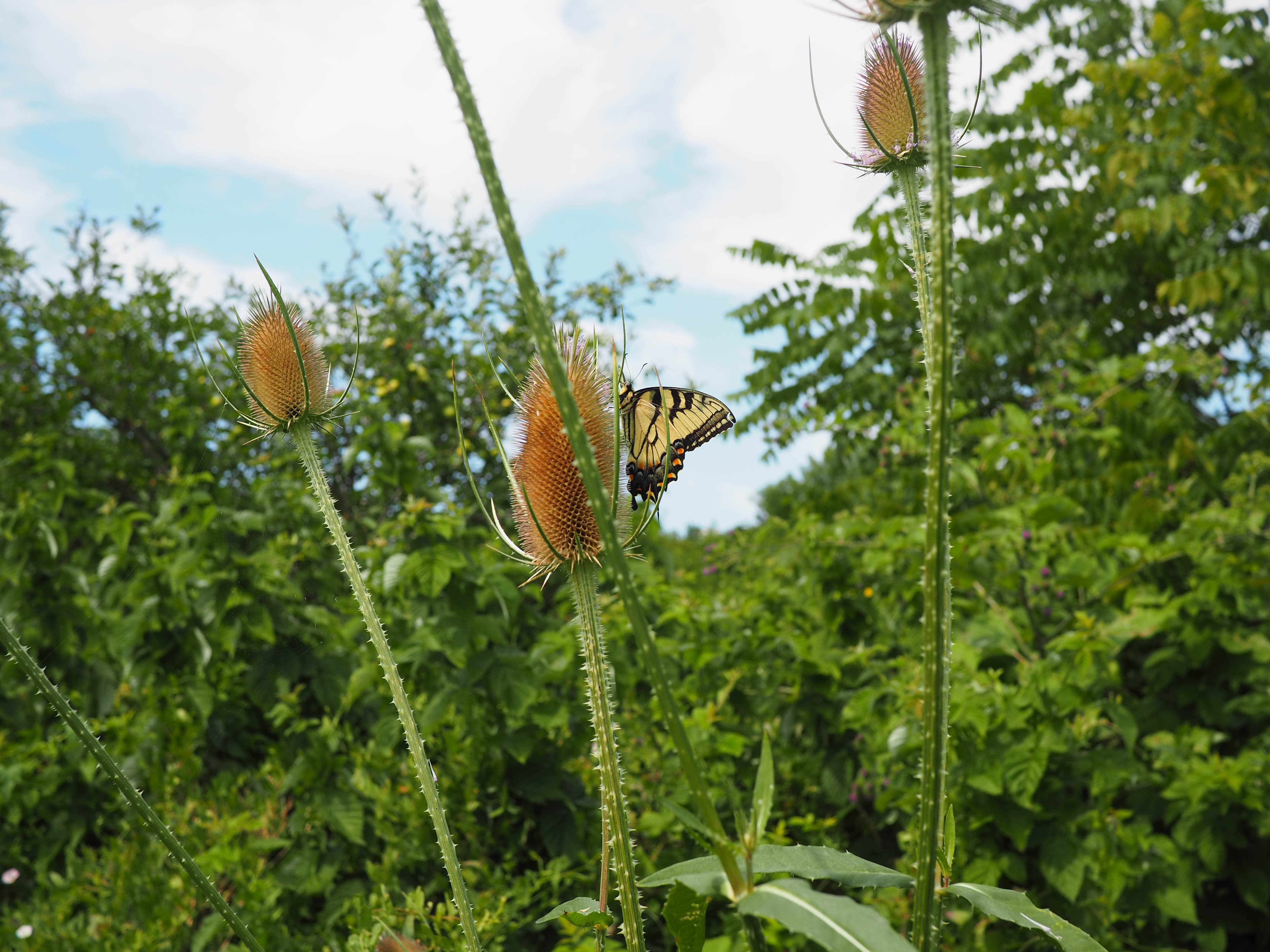The Conversation
The Gitxsan and Wet’suwet’en peoples collaborated in 1987 to challenge the British Columbia government and legally establish title to their ancestral territories. That landmark case, known as the Delgamuukw case, acknowledged that Aboriginal title over traditional lands exists and is possible to attain. It has been cited repeatedly in recent weeks in the news.
That same year, Mi'kmaq artist Mike MacDonald created a five-monitor video installation called Electronic Totem. These art videos present scenes of sustenance from Gitxsan lands, located in northern British Columbia: berry picking, fishing and waterways, as well as language and song that document the Gitxsan relationships with their territory.
Through the late 1980s, MacDonald continued creating his work in conversation with elders by documenting oral histories that became evidentiary testimony presented in court for the land title case, and also in a project for the tribal council to build a record of traditional medicines and their uses in the Gitxsan language.
While documenting an area threatened by clear-cut logging on a mountain range near Kitwanga, B.C., MacDonald noticed the widespread presence of butterflies. He took photos of the pollinators and showed them to an elder who explained the connections between butterflies, medicine plants and healing.


A repeating history
That these pollinator gardens across the country emerged from Indigenous resistance on Wet’suwet’en territory is so relevant to the contested development of the Coastal GasLink LNG pipeline through the same territory.
Read more: Wet'suwet'en blockades: No more business as usual in Canada
Despite the passing of 30 years between the logging and today’s pipeline protests, there are similarities. Conflict in this territory resonates across larger landscapes and brings to light broader challenges with respect to Indigenous rights and environmental protection in a country built on resource extraction and genocide. Since MacDonald’s observations in the late 1980s, the decline of pollinators has become a mainstream environmental issue with intense public interest. Dramatic losses of butterfly and bee species have been documented in Canada and have raised concerns about potential economic and ecological impacts of losing the ecosystem services these insects provide. Documented threats to pollinators in Canada include climate change, pesticide use, habitat loss, and disease introduction. The threats differ across species and across regions, but a common root cause is growth of various extractive industries, industrial farming and urbanization, all at the expense of nature. While extensive media coverage, public concern, political will and resources have been directed to conserving bees and other pollinators, the reality remains that insect species continue to decline. It is becoming painstakingly clear that addressing core issues with respect to Indigenous land stewardship, resource extraction and corporate interests remain critical to addressing large-scale environmental concerns such pollinator loss in Canada and beyond.

Butterflies and medicine plants
TC Energy’s attempts to build the $4.7-billion Coastal GasLink pipeline in unceded Wet’suwet’en territories is another example of settler-colonial violence and inadequate consultation processes that uphold resource extraction.
Wet’suwet’en hereditary chiefs have not given consent to the pipeline development. Their demands align with the United Nations Declaration on the Rights of Indigenous People and the Truth and Reconciliation Commission Calls to Action, and they have expressed concerns about the environmental, legal and spiritual impacts of this project trespassing their territories, particularly in regards to their stewardship of fresh drinking water and healthy salmon populations.
Past and recent lessons from the Wet’suwet’en territory highlight what Canadians have had to and will continue to grapple with: the desire to conserve wildlife may come at the expense of short-term economic gain. That requires a deep and reflective approach to our relationship with land and the Indigenous peoples who have stewarded these territories since time immemorial.
MacDonald’s medicine and butterfly gardens are sites of Indigenous ecological, cultural and spiritual knowledge. They are also spaces that call for changing approaches to resource extraction and reflecting on relationships with land.

Sheila Colla is an Assistant Professor, Environmental Studies, at York University, Canada. She receives funding from tri-council funding sources including New Frontiers for the "Finding flowers" project described here. Dana Prieto is a Research Associate for the Finding Flowers Project and Faculty of Environmental Studies at York University, Canada. She receives funding from New Frontiers for "Finding Flowers" as a co-investigator with Sheila Colla, Lisa Myers is an Assistant Professor, Faculty of Environmental Studies, at York University, Canada.
This article is republished from The Conversation under a Creative Commons license. Read the original article.
Join the Conversation

